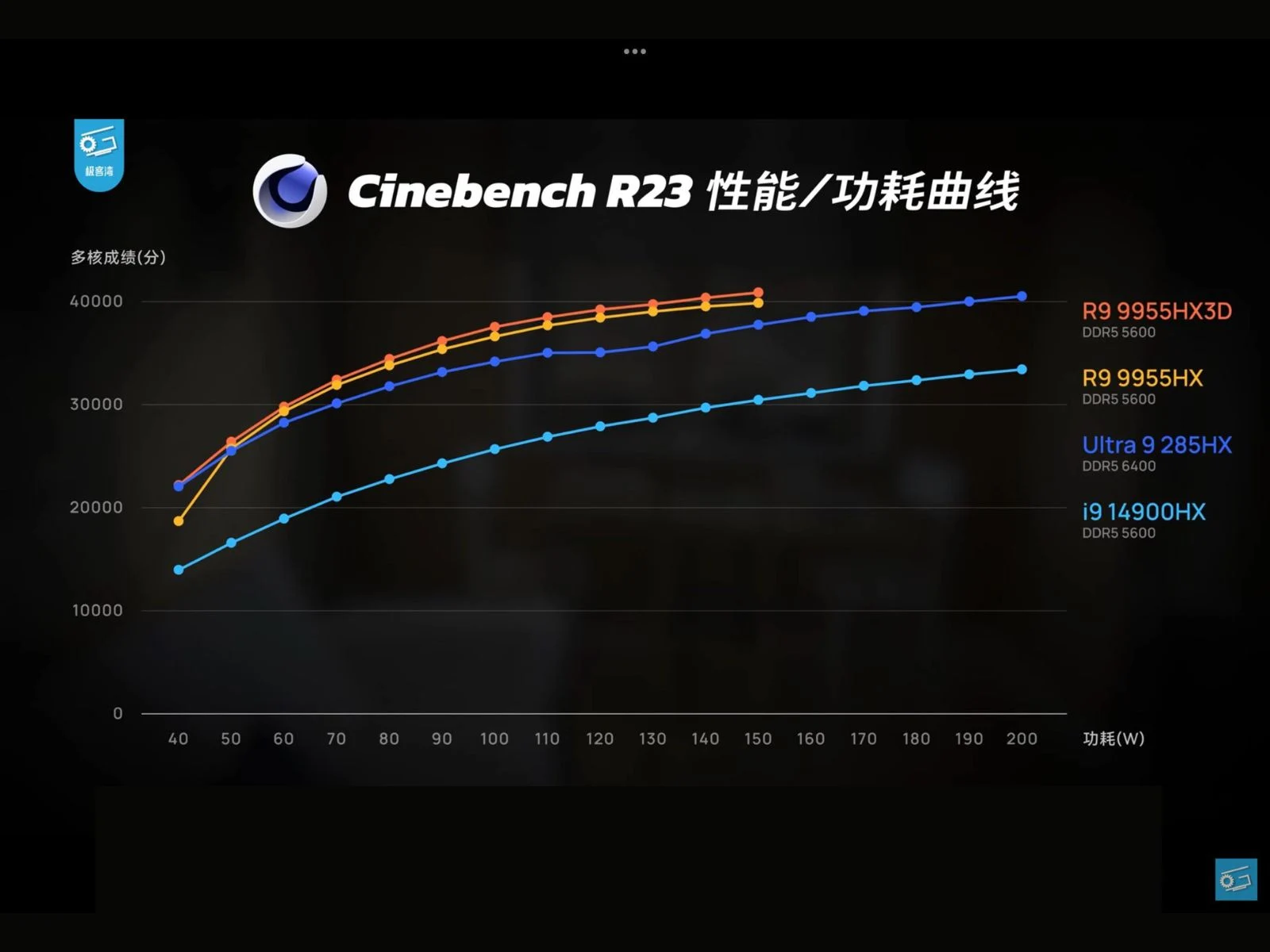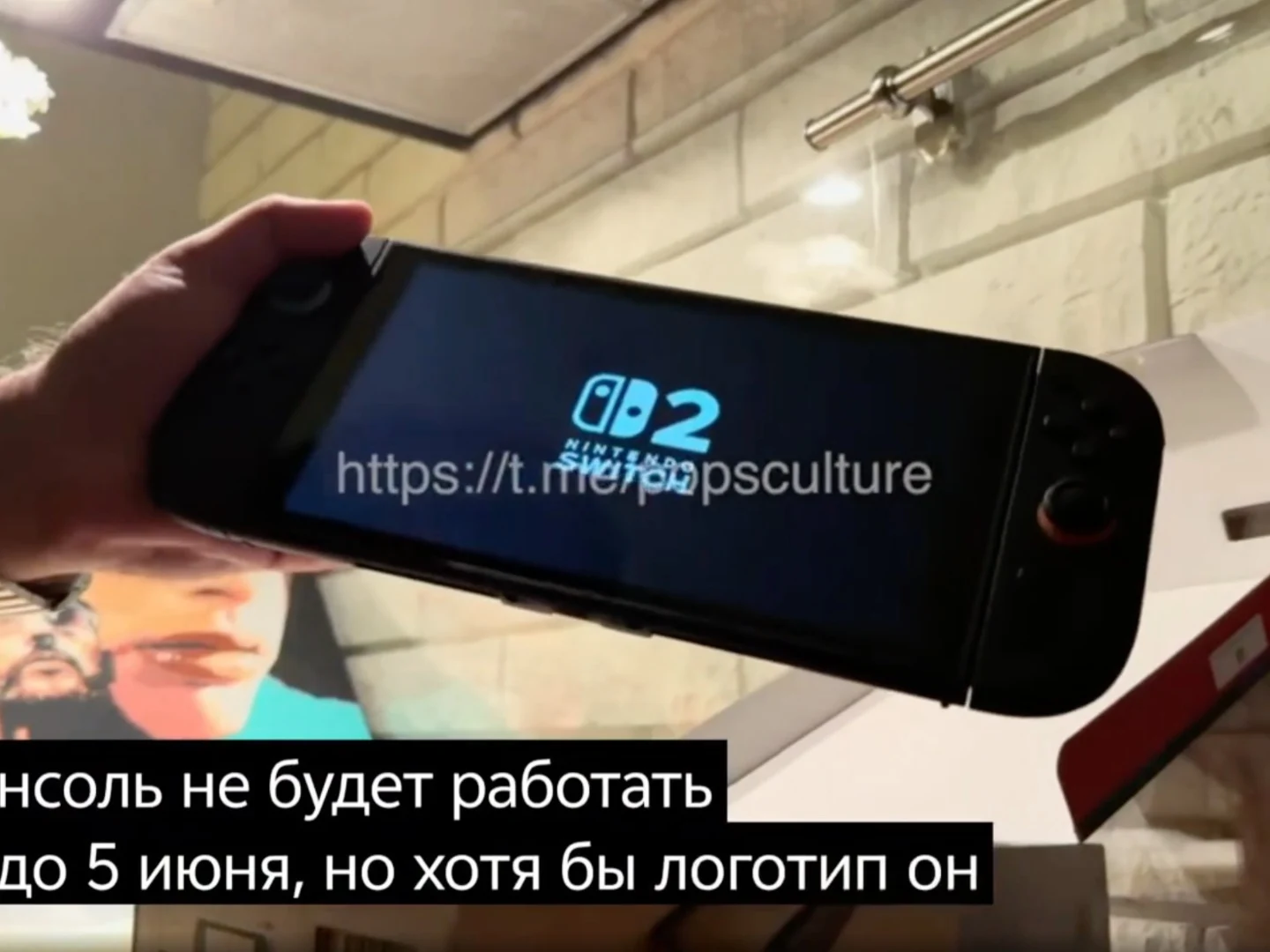Key Takeaways
1. AMD’s Ryzen 9 9955HX3D shows superior performance-per-watt compared to Intel’s Ultra 9 285HX and Core i9-14900HX, especially in the 40–100W range.
2. There are concerns about OEMs’ reluctance to integrate AMD’s latest chips into high-end gaming laptops, despite their efficiency advantages.
3. Users worry that some laptops may reuse cooling designs from Intel models for AMD variants, potentially leading to poor thermal management.
4. Availability of laptops with the AMD 9955HX3D is limited, with only a few models from brands like MSI, ASUS, and XMG currently offering the chip.
5. Ongoing discussions suggest that while AMD excels in performance per watt, Intel’s stronger market presence and OEM support may hinder AMD’s broader adoption.
A recent Cinebench R23 benchmark comparison shared by the Chinese YouTuber Geekerwan has caused a stir in the Reddit community r/GamingLaptops. This excitement was mainly triggered by Reddit user u/Aggravating_Match298, who posted the results, which included more than just the numbers. The comparison chart shows power consumption against multi-core performance for AMD’s Ryzen 9 9955HX3D, Ryzen 9 9955HX, Intel’s Core Ultra 9 285HX, and the older Intel Core i9-14900HX.
Performance Insights
In the range of 40–100W, the AMD 9955HX3D stands out with notably superior performance-per-watt, as illustrated in the graph. The regular 9955HX is not far behind, which showcases the architectural improvements AMD has achieved with its Fire Range platform. Meanwhile, Intel’s Ultra 9 285HX only starts to catch up at power levels exceeding 130W, while the 14900HX consistently lags behind.
Real-World Concerns
However, the conversation on Reddit has unveiled some real-world challenges. Many users pointed out that OEMs seem hesitant to integrate AMD’s latest chips into mainstream products. One user remarked, “Almost no high-end gaming laptops are using AMD despite better efficiency.”
Additionally, some Redditors expressed worries about the thermal design choices being made. They claim that Dell might be reusing cooling designs from their Intel laptops for the AMD variants. For instance, one user mentioned that the AMD version of a Dell laptop lacked vapor chamber cooling and instead utilized a thick shim to connect with the chiplets, supposedly because the heatsink was initially made for an Intel CPU configuration.
Potential Impacts on Performance
This could potentially result in less effective thermal management. Nevertheless, it’s worth noting that Dell or any official channel has not confirmed these claims, and they remain largely anecdotal.
Despite these issues, the interest in AMD’s offerings is undeniable. Geekerwan’s graph has been broadly shared across platforms like Reddit, highlighting the AMD 9955HX3D as a formidable option for gamers and creators alike who seek multi-threaded performance with fairly efficient power usage.
Nonetheless, users quickly highlighted a significant drawback: availability. Currently, only a few high-end models from brands like MSI, ASUS, and XMG include this chip, and broader adoption by OEMs appears sluggish. Some speculate that limited supply and Intel’s stronger foothold in the OEM markets are factors contributing to this situation.
Whether OEMs will increase their support for AMD’s Fire Range or continue to prefer Intel’s more established platforms is still uncertain. For the time being, discussions on Reddit indicate that even though AMD seems to excel in performance per watt, issues regarding availability and OEM support continue to favor Intel.
Source:
Link















